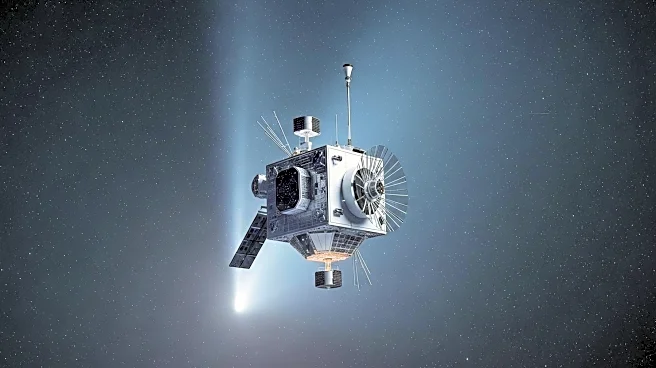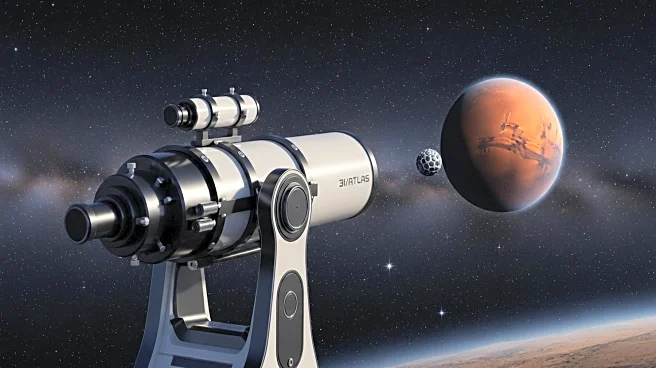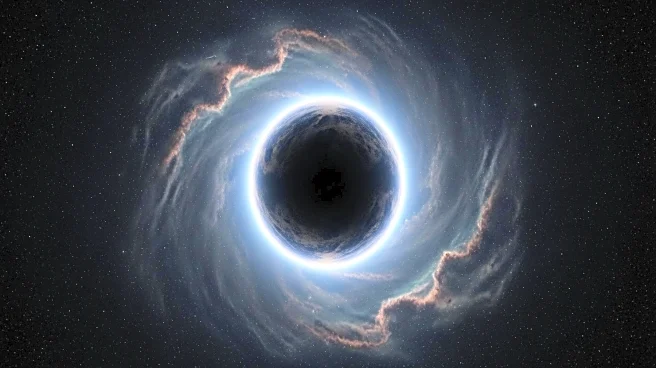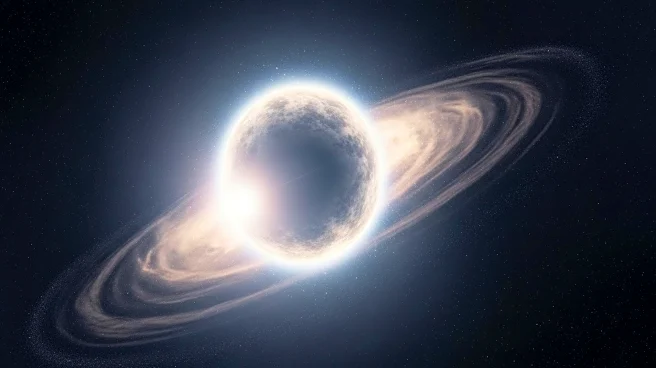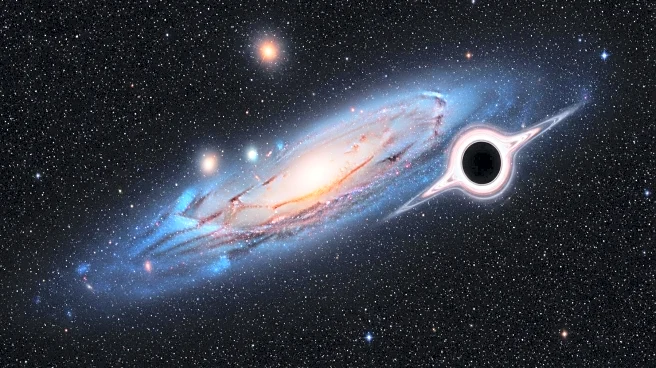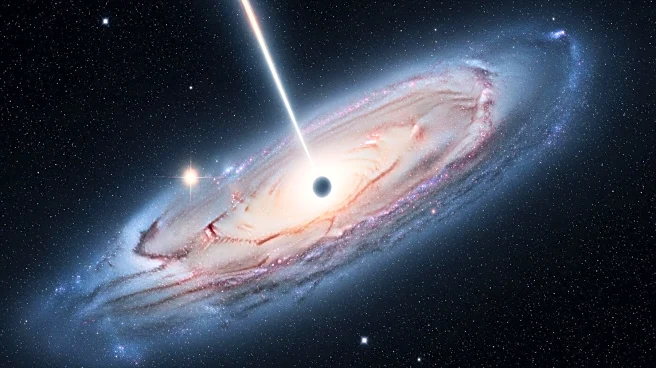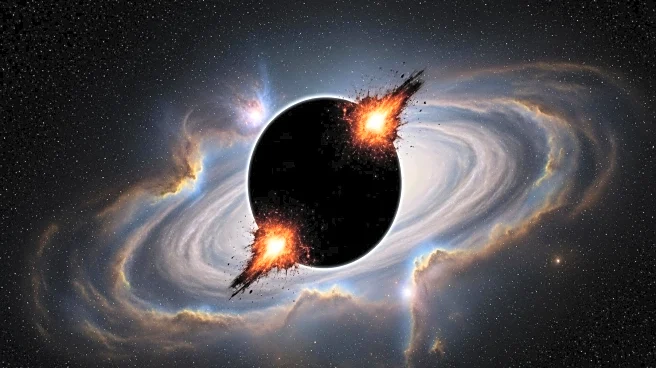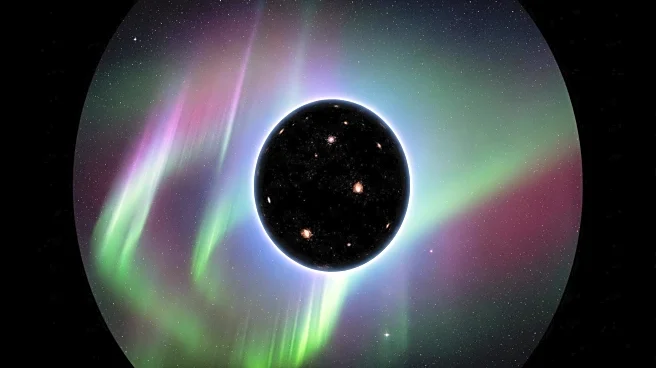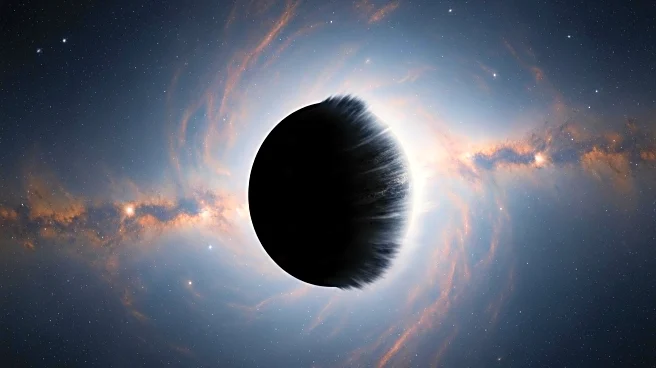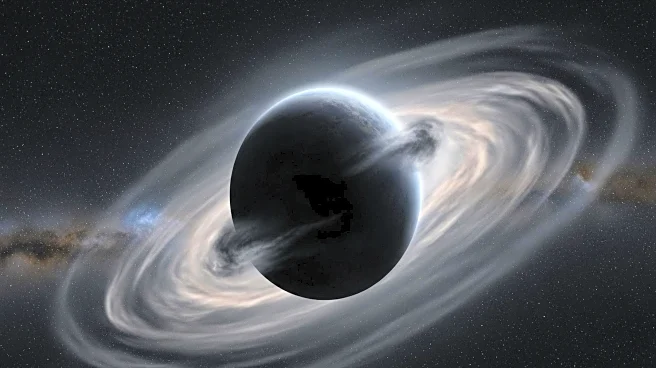What is the story about?
What's Happening?
Astronomers have detected the 'heartbeat' of a newborn magnetar within a gamma-ray burst, challenging the long-held belief that such bursts are solely powered by black holes. The discovery, led by Run-Chao Chen of Nanjing University and published in Nature Astronomy, involved observing a gamma-ray burst designated GRB 230307A. This burst, caused by the collision of two stars, lasted 200 seconds. Researchers identified a periodic signal indicating the rapid spin of a magnetar, spinning 909 times per second. This marks the first direct detection of a periodic signal from a millisecond magnetar within a gamma-ray burst.
Why It's Important?
This discovery has significant implications for astrophysics, as it suggests that magnetars, not just black holes, can power gamma-ray bursts. This challenges existing models of stellar evolution and the mechanisms behind these cosmic phenomena. Understanding the role of magnetars could lead to new insights into the formation and evolution of neutron stars and black holes. The findings also open new avenues for research into the extreme physics of magnetars, potentially leading to breakthroughs in our understanding of the universe.
Beyond the Headlines
The ability to detect periodic signals from magnetars within gamma-ray bursts represents a significant technological and scientific achievement. It underscores the importance of international collaboration and data sharing among research institutions. This discovery highlights the dynamic nature of the universe and inspires further exploration into the mysteries of cosmic phenomena. It also raises questions about the potential for other unknown cosmic events that could reshape our understanding of the universe.
AI Generated Content
Do you find this article useful?


